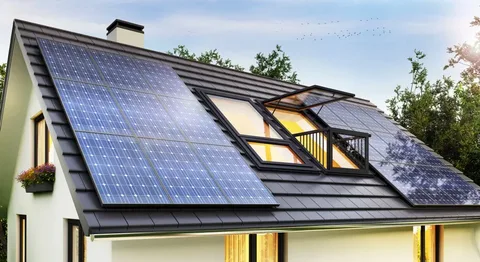Switching to solar energy is a sustainable choice that helps reduce electricity costs and contributes to environmental preservation. If you’re considering solar panel installation in Pakistan, this step-by-step guide will walk you through the process in simple and easy-to-understand terms.
Assessing Your Solar Energy Needs
Before installing solar panels, the first step is to evaluate your energy requirements. Start by calculating your monthly electricity consumption, which is usually mentioned in kilowatt-hours (kWh) on your electricity bill. This will help determine the size of the solar system you need.
In Pakistan, sunlight availability is abundant in most regions, making it an excellent location for solar energy systems. However, local weather patterns and the orientation of your property also play a role in the system’s efficiency. Using online solar calculators or consulting with a professional installer can provide accurate estimates.
Choosing the Right Solar Panels
Solar panels come in different types, including monocrystalline, polycrystalline, and thin-film panels. Each type has its own advantages:
- Monocrystalline Panels: Highly efficient and space-saving but relatively expensive.
- Polycrystalline Panels: Affordable with decent efficiency.
- Thin-Film Panels: Lightweight and flexible but less efficient compared to the other types.
When selecting solar panels in Pakistan, consider factors like efficiency, durability, and cost. High-quality panels are worth the investment as they ensure long-term performance.
Finding a Reputable Solar Installation Company
Choosing the right solar installation company is crucial for a hassle-free experience. Research local installers and compare their reviews, certifications, and completed projects.
In Pakistan, ensure the installer is familiar with local regulations and has experience handling installation projects in your region. Hiring a licensed and certified professional guarantees safety and compliance with industry standards.
Planning and Site Assessment
A site assessment is essential for determining the optimal placement of your solar panels. A professional installer will inspect your roof’s condition, angle, and shading issues. This step ensures the panels are positioned to capture maximum sunlight throughout the day.
Additionally, the installer will design a customized solar system layout tailored to your energy needs. They’ll also handle the permitting process and documentation required by local authorities.
Financing and Installment Options
Solar panel systems can be a significant upfront investment, but various financing options are available in Pakistan. Many companies offer solar on installment plans, making it easier for homeowners and businesses to afford.
Additionally, you can benefit from government incentives and subsidies designed to promote renewable energy. These incentives can significantly reduce the overall cost of your solar energy system.
Installation Process
The installation process involves several key steps:
- Preparing the Roof and Mounting Structure: The roof is cleaned and reinforced if necessary. A mounting structure is installed to hold the panels securely.
- Placing the Solar Panels: Panels are carefully positioned and secured onto the mounting structure.
- Wiring the System: The panels are connected to an inverter, which converts the generated energy into usable electricity. The system is then linked to your home’s power grid or battery storage.
Installation timelines depend on the complexity of the project but usually take 1-3 days for residential systems.
Inspection and Activation
Once the installation is complete, a final inspection ensures the system complies with safety and performance standards. The inspector will verify the wiring, mounting, and overall setup.
After the inspection, the system is activated, allowing you to start generating electricity. Many modern solar systems include monitoring tools that let you track energy production in real-time.
Maintenance and Tips for Longevity
Maintaining your solar panels is relatively simple but essential for optimal performance. Here are some tips:
- Regular Cleaning: Dust and debris can reduce efficiency. Clean your panels every few months or after a dust storm.
- Periodic Inspections: Check for any damage or shading issues.
- Timely Repairs: Address any wear and tear promptly to prevent bigger issues.
Proper maintenance ensures your solar system runs efficiently for 20-25 years or more.
Conclusion
Installing solar panels is a smart investment that offers long-term savings and environmental benefits. By following this step-by-step guide, you can navigate the process with confidence and make the switch to renewable energy.
If you’re in Pakistan, consult with a trusted local solar installation company to get started on your journey to sustainable living.
